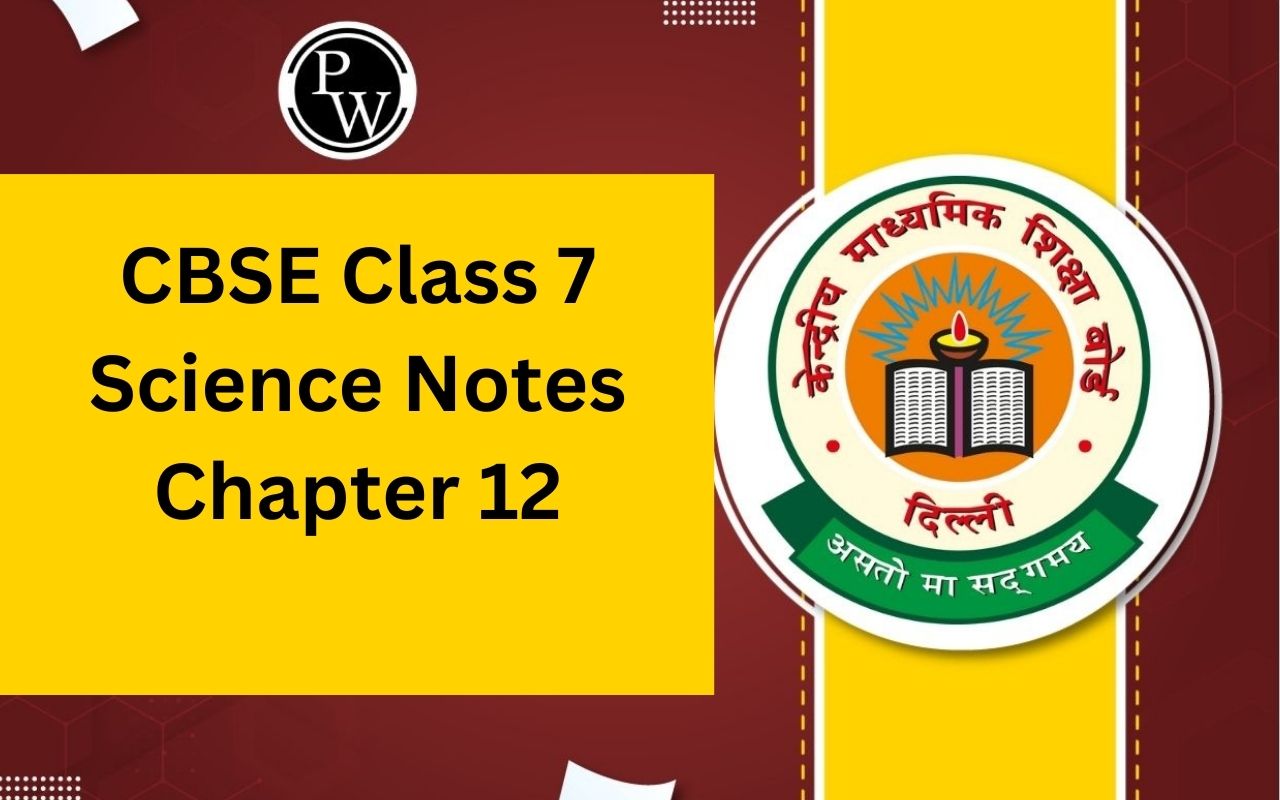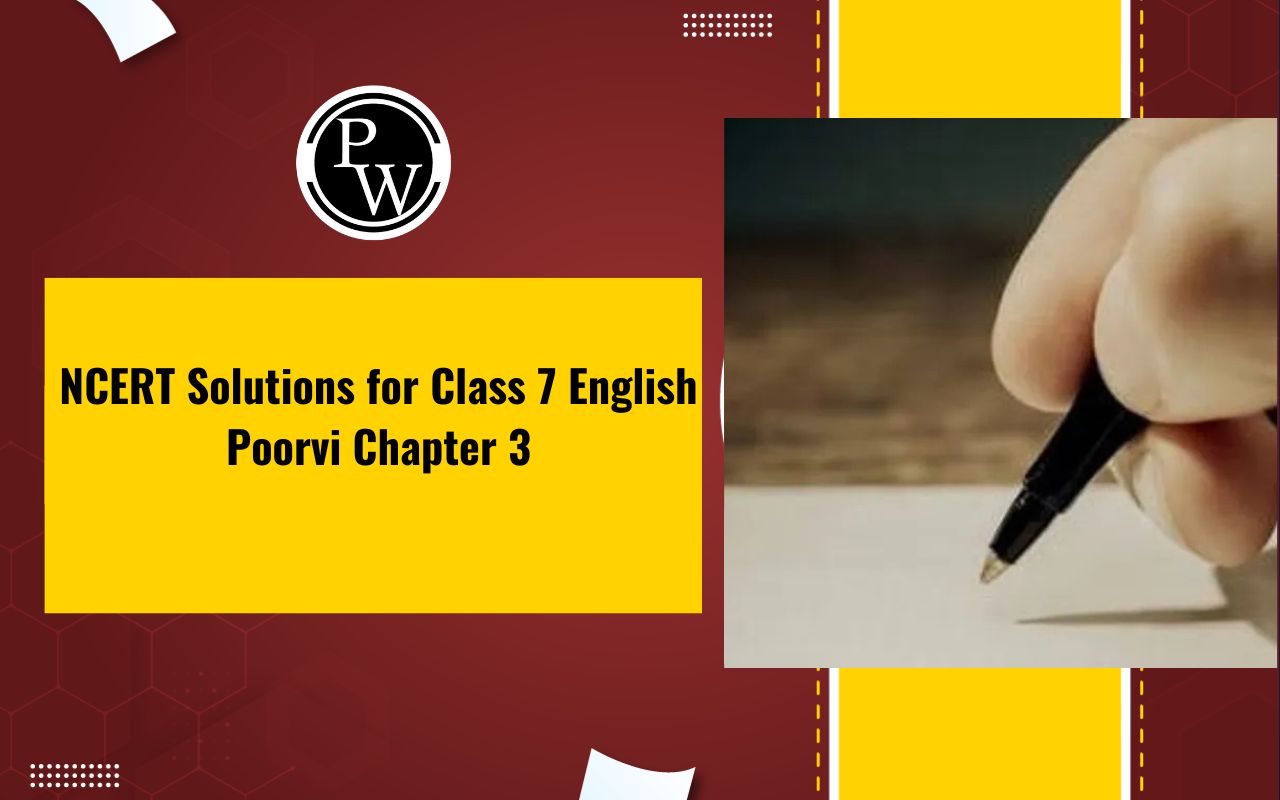

CBSE Class 7 Science Notes Chapter 12: Some of the top professors who have been teaching science for years have developed the NCERT notes for Class 7 Science Chapter 12. The notes have been prepared with special attention to the present CBSE curriculum.
The CH 12 Class 7 Science notes are helpful since, in contrast to the chapter, they provide a concise list of all the subtopics, which is ideal for reviewing the material ahead of an exam. Download these Class 7 Science Chapter 12 notes now to ensure that you study properly, solidify your foundation, and perform well on the test.CBSE Class 7 Science Notes Chapter 12 Overview
Key concepts in Science - Reproduction in Plants are clearly and thoroughly understood by using the notes for CBSE Class 7. Students gain knowledge about the traits and functions of plant reproduction, including crucial processes like seed distribution and pollination. Better retention is facilitated by the well-structured framework, which facilitates effective revision. Real-world applications and useful examples enhance knowledge of the topic. These notes are crucial for achieving scholastic success and laying a solid foundation in the intriguing field of plant reproduction. They have shown to be quite helpful in assisting students in achieving academic success.CBSE Class 7 Science Notes Chapter 12 PDF
For pupils to gain confidence in the field of science, the notes from Chapter 12 of Science Class 7 are essential. This enables students to comprehend all of the chapter's challenging material. All you need is a device and an internet connection to get these Science notes for Class 7 Chapter 12. You can use the Chapter 12 Science Class 7 notes whenever you'd like by downloading them in PDF format. After downloading the notes, you don't require an online connection. Get a print of it as well and preserve the notes in a physical copy so you can edit them whenever you'd like.CBSE Class 7 Science Notes Chapter 12 PDF
CBSE Class 7 Science Notes Chapter 12
Reproduction
Reproduction is the process by which a parent produces offspring. It's a biological mechanism. It is not always possible for the progeny to be a replica of their parents.Mode of Reproduction
There are two modes of reproduction, asexual reproduction and sexual reproduction.
(i) Sexual reproduction
(ii) Asexual reproduction
Asexual Reproduction
Asexual reproduction is defined as reproduction that takes place without the participation of male and female gametes. With this method of reproduction, the seed is not formed.Different Types of Asexual Reproductions are:
-
Vegetative Propagation

-
Examples of organisms produced by vegetative propagation are:
-
Onion, garlic, and tulip are produced by the stems.
-
Sweet Potato and Dahlia are produced by the roots.
-
Bryophyllum is produced by leaves.

Advantages of vegetative propagation
Seedless plant propagation technique. The parent plant is replicated exactly. A large number of progenies are generated. Plants free from disease can be multiplied.-
Budding
-
Fragmentation
-
Spore Formation
How do the male gametes reach the female gametes in plants?
A zygote is created when the male and female gametes combine. Pollination is the procedure by which the male gametes get to the female gametes. Because of their hard coating, pollen grains can withstand a variety of weather conditions. Because they are light, winds and water frequently transfer them to other plants. Occasionally, pollen grains also stick to insects, which then transport them to other flowers. Pollination is the process by which pollen grains move from one stigma to another.
How are fruits and seeds formed?
Following fertilization, the flower's ovary expands and transforms into a fruit. The flower's remaining components fall off. The fruits' seeds are formed by the developing ovules. The seeds contain the embryo encapsulated. Certain fruits, like oranges, mangos, and apples, are luscious and meaty. Certain fruits, like walnuts and almonds, are tough.Sexual Reproduction
Sexual reproduction is the process of reproduction involving both male and female gametes. A zygote is created when the male and female gametes—produced by the pollen grains and the pistil's ovary—merge. Together, the stigma, style, and ovary comprise the pistil. Using this method of reproduction, the seed is created. The reproductive organ of the plant, the flower, is where this reproduction takes place. The flower has both pistils, which are the female reproductive organs, and stamens, which are the male reproductive organs. Flowers with pistils or stamens are referred to as unisexual flowers, and those with both are referred to as bisexual blooms.Shoot – A young plant is often termed a shoot. Generally, a shoot is regarded as a part of the plant that has stems, leaves, and flowers.
Node – It is a part of the stem or branch of a plant from where the leaf arises.
 Bisexual flowers are those that have both pistils and stamens. For instance, mustard, petunia, hibiscus, brinjal, lilies, and roses.
Certain flowers are referred to as unisexual flowers because they have either the statement or the pistil. For example, coconut, cucumber, watermelon, and papaya.
The traits of both plants that engage in sexual reproduction are present in the newly created plant.
Anther, which contains pollen grains, makes up the stamen. Male gametes are produced by these pollen grains.
Bisexual flowers are those that have both pistils and stamens. For instance, mustard, petunia, hibiscus, brinjal, lilies, and roses.
Certain flowers are referred to as unisexual flowers because they have either the statement or the pistil. For example, coconut, cucumber, watermelon, and papaya.
The traits of both plants that engage in sexual reproduction are present in the newly created plant.
Anther, which contains pollen grains, makes up the stamen. Male gametes are produced by these pollen grains.
Pollination
Pollination is the process by which pollen moves from a flower's anther to its stigma. Self-pollination is the process by which a flower's pollen settles on its stigma. Cross-pollination occurs when a flower's pollen touches another flower's stigma.Types of pollination
There are two types of pollination: (i) Self-pollination (ii) Cross-pollination (i) Self-pollination: In this pollination, pollen grains are transferred from one another to the stigma of the same flower. (ii) Cross-pollination: In this pollination, pollen grains are transferred from the anther of one flower to the stigma of another flower.Fertilization
Fertilisation, which happens after pollination, is the process by which male and female gametes combine to form zygotes, which subsequently grow into embryos. Following fertilization, the ovary produces fruits, and the ovules produce seeds.Seed Dispersal
Seed dispersal is the movement of seeds by wind, water, and animals. Animals can spread seeds, such as urena and xanthium. Castor and balsam are two types of seeds that get scattered when fruit bursts with a violent shock. Seed dispersal is crucial because it prevents plant seeds from becoming overcrowded, ensuring that every plant receives enough sunlight and water.Benefits of CBSE Class 7 Science Notes Chapter 12
- provide concise, understandable descriptions of important ideas.
- simplifies difficult subjects for easier comprehension.
- Effective study aid for final exam preparation.
- improves the recall of important information.
- offers essential points and advice to help with efficient exam preparation.
- combines information to save time.
- Gives priority to significant subjects and inquiries.
- provides useful illustrations for linkages to the actual world.
- increases students' exam-taking confidence.
CBSE Class 7 Science Notes Chapter 12 FAQs
What are the important points of reproduction in plants?
What are the two methods of multiplication in plants class 7?
What is the importance of reproduction in plants class 7?











